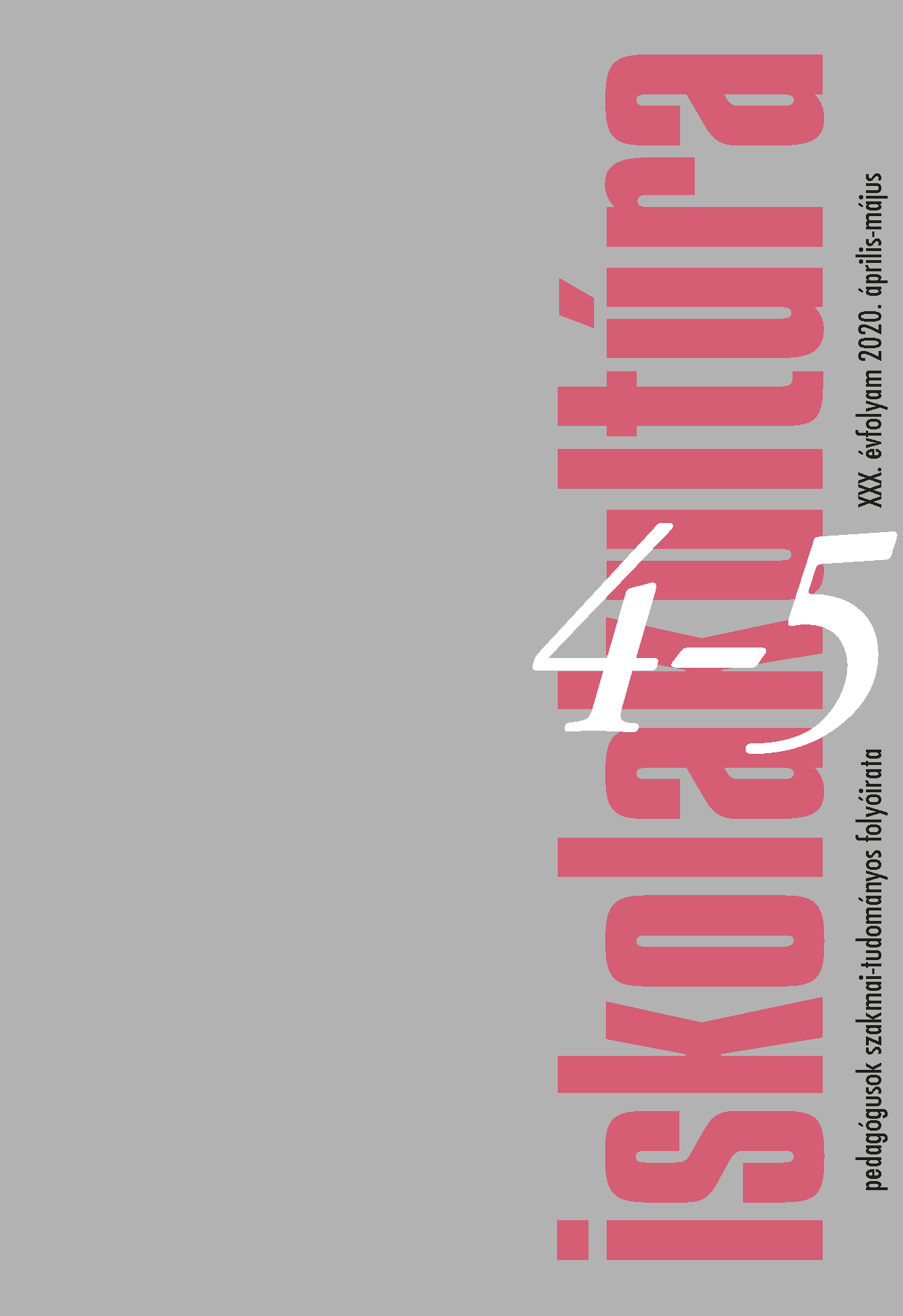Hétvégi magyar iskolák és óvodák közelebbről: a Tel-Avivi Magyar Iskola és Óvoda
Main Article Content
Absztrakt
A Tel-Avivi Magyar Iskola és Óvoda egy viszonylag új, de annál aktívabb tagja a világszerte, hasonló szervezeti keretek között működő hétvégi magyar iskolák és óvodák körének. Ezekről az intézményekről és azok számáról pontos adattal egyelőre sem a velük kapcsolatban álló magyarországi hivatalos szervezetek (Miniszterelnökség/Nemzetpolitikai Államtitkárság, Magyar Diaszpóra Tanács, Külügyminisztérium vagy a Balassi Intézet), sem maguk a hálózatba egyelőre nem tömörült iskolák és óvodák nem rendelkeznek; körülbelüli számadatként 170-200 közé tehető a jelenleg is hétvégi magyar iskola és/vagy óvodaként működő intézmények száma, amelyeknek egy része ezt a szókapcsolatot használja hivatalos nevében is, mások egyesületként, tanodaként, online felületként működnek. Annyi bizonyos, hogy a technikai eszközöknek és fórumoknak köszönhetően egyre inkább láthatóvá és elérhetővé válnak azok számára, akik a magyar nyelv és kultúra ápolását külföldön is fontosnak tartják. Egy-egy személy, csoportosulás, kulturális intézet, konzulátus vagy nagykövetség által teremtődtek meg, s lettek részei a diaszpóra magyarság helyi alakulatának. A Tel-Avivi Magyar Iskola és Óvoda a jelenlegi formájában 2014 óta létezik. Létezésének fontos eleme, hogy elősegítse a felnövekvő generációk és családok tudatosabb nyelvhasználatát, illetve a származási kultúrához való könnyebb és rugalmasabb kapcsolódást.
Letöltések
Article Details
Hivatkozások
https://kisebbsegkutato.tk.mta.hu/uploads/files/olvasoszoba/intezetikiadvanyok/Minority_hungarian_communities.pdf
[Letöltés dátuma 2019.01.07]
Ben-Rafael, Elizaer (1994): Language, identity, and social division: The case of Israel. Oxford studies in language contact. Oxford: Clarendon, Volume 25 Issue 3
Cenoz, J. and Gorter, D. (2006): Linguistic landscape and minority languages, International Journal of Multilingualism 3(1): 67–80.
Cohen, Antony P. (1985): The Symbolic Construction of Community. London, Tavistock
Hillery, George: Communal Organizations. Chicago: University of Chicago Press
Holecz, Margit és Bartha, Csilla és Varjasi, Szabolcs (2016) Új paradigma vagy térfoglalás? – Nyelvhasználók a periférián és a többnyelvűség kritikai (nyelvi) tájképe. In: Általános Nyelvészeti Tanulmányok 28. Akadémiai Kiadó, Budapest, pp. 73-90. ISBN 978 963 05 9861 3
https://www.researchgate.net/publication/319853790
[Letöltés dátuma 2019.01.23.]
Kovács Éva (2007): Közösségtanulmány (Módszertani jegyzet). MTA TK Kisebbségkutató Intézet, Budapest
Landry, Rodrigue, Bourhis, Richard Y. (1997): Linguistic Landscape and Ethnolinguistic Vitality: An Empirical Study. In: Journal of Language and Social Psychology. Vol 16, Issue 1, 1997 pp. 23-49.
https://journals.sagepub.com/doi/abs/10.1177/0261927X970161002
[Letöltés dátuma 2019.01.23.]
Muchnik, M., Niznik, M., Teferra, A., Gluzman, T. (2016): The Status of the Four Languages in Israel. In: Muchnik, M., Niznik, M., Teferra, A., Gluzman, T.: Elective Language Study and Policy in Israel. Palgrave Macmillan
Novák Attila (2018): Arról, hogy mit lehet írni Izraelről és mit szabad
https://akibic.hu/2018/06/05/novak-attila-arrol-hogy-mit-lehet-irni-izraelrol-es-mit-szabad/
[Letöltés dátuma 2019.01.23.]
Olosz Levente (2015): A magyar ajkú zsidóság helye az izraeli társadalomban. In: Fedinec Csilla (szerk.): Határhelyzetek VIII. Terek, intézmények, átmenetek. Balassi Intézet Márton Áron Szakkollégium Budapest, 2015. 138-159.
Or Y. – Shohamy E (2017): English Education Policy in Israel. In: Kirkpatrick (ed.) English Language Education Policy in the Middle East and North Africa, Springer
Padden, C. (1980): The deaf community and the culture of deaf people. In C. Baker, & R. Pattison (Eds.) Sign language and the deaf community. Silver Spring: National Association of the Deaf
Papp András László (2003): Ki a zsidó Izraelben és a diaszpórában?
http://beszelo.c3.hu/cikkek/ki-a-zsido-izraelben-es-a-diaszporaban
[Letöltés dátuma 2019.01.23.]
Rosenhouse, Judith (2012): Israeli Hebrew and Hungarian Interaction: phonetic/phonological issues.
http://www.ptfon.pl/files/2012_04-05.pdf
[Letöltés dátuma 2019.02.19.]
Rosenhouse, J. (2018) "Jewish Hungarian in Hungary and Israel" in: Benjamin Hary and Sarah Bunin Benor (eds.) Languages in Jewish Communities, Past and Present, Boston. Berlin: De Gruyter Mouton, 453-471.
Scollon, R. and Scollon, S. W. (2003). Discourses in Place: Language in the Material World, London: Routledge
Shiri, Zsuzsa (2013): Pezsgés az izraeli magyar szcénán.
http://www.szombat.org/politika/pezsges-az-izraeli-magyar-szcenan?fbclid=IwAR2f8IPXFGdz-ZnKzlOIAocAsJ9zB7fep6w6-HDOML-tlo2VF2vRKZm_pws
[Letöltés dátuma 2019.01.23.]
Shiri, Zsuzsa (2013): Izraeli magyarok: pezsgés minden vonalon
http://www.szombat.org/politika/izraeli-magyarok-pezsges-minden-vonalon
[Letöltés dátuma 2019.01.23.]
Shohamy, Elana (2006): Language policy. Hidden agendas and new approaches, Routledge, London
Shohamy, Elana & Durk Gorter (eds.) (2009): Linguistic Landscape: Expanding the Scenery. London: Routledge.
Spolsky, Bernard – Shohamy, Elana (1999): The languages of Israel: policy, ideology and practice. Clevedon: Multilingual Matters
Surányi, Ráchel (2019): “Csak azért, mert magyarok, nem fogok velük barátkozni” – avagy összetartóak-e az Izraelben élő magyarok?
https://izraelinfo.com/2019/11/12/csak-azert-mert-magyarok-nem-fogok-veluk-baratkozni-avagy-osszetartoak-e-az-izraelben-elo-magyarok/
[Letöltés dátuma 2019.11.20.]
Szűcs, Tímea (2017): Zsidó kivándorlás Magyarországról Palesztinába 1945–1949: Sorsfordító döntések – identitásválasztások (Jewish Migration from Hungary to Palestine 1945–1949: Fateturning Decisions – Identity Choices)
https://www.academia.edu/34526824/Zsid%C3%B3_kiv%C3%A1ndorl%C3%A1s_Magyarorsz%C3%A1gr%C3%B3l_Palesztin%C3%A1ba_1945_1949_Sorsford%C3%ADt%C3%B3_d%C3%B6nt%C3%A9sek_identit%C3%A1sv%C3%A1laszt%C3%A1sok_Jewish_Migration_from_Hungary_to_Palestine_1945_1949_Fateturning_Decisions_Identity_Choices_
[Letöltés dátuma 2019.01.07.]

